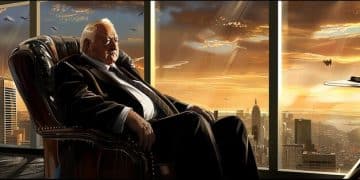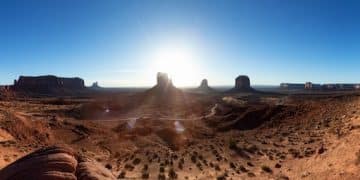Heaven’s Gate (1980): A Cinematic Redemption Story

Beyond the Box Office Flop: Why ‘Heaven’s Gate’ (1980) Deserves a Second Look in the Current Cinematic Landscape reveals the misunderstood genius of Michael Cimino’s Western epic, analyzing its historical context and artistic merits to argue for its place as a forgotten masterpiece.
Beyond the Box Office Flop: Why ‘Heaven’s Gate’ (1980) Deserves a Second Look in the Current Cinematic Landscape is a question that still lingers in film history. The film was a financial disaster that nearly bankrupted a studio and tarnished reputations. But is that all there is to the story?
This article explores the complexities surrounding the film and considers whether, decades later, we can appreciate it for what it is, separate from the hype and controversy.
A Brief Overview of “Heaven’s Gate” and Its Initial Reception
Released in 1980, “Heaven’s Gate” was directed by Michael Cimino, fresh off the success of “The Deer Hunter.” With a sprawling narrative set against the backdrop of the Johnson County War in 1890s Wyoming, the film aimed to be a historical epic unlike any other. The problem was the film was plagued by production delays, cost overruns, and rumors of Cimino’s dictatorial behavior on set.
Upon its initial release, “Heaven’s Gate” was almost universally panned by critics. It was labeled as self-indulgent, incoherent, and excessively long. Audiences stayed away in droves, and the film quickly became synonymous with cinematic failure.

Why Was “Heaven’s Gate” Initially a Failure?
The reasons for the film’s initial failure are multi-faceted, ranging from production issues to changing audience tastes. It’s important to understand these issues.
Production Problems and Cost Overruns
The film’s production was notoriously chaotic, marked by Cimino’s perfectionism. This included constantly changing set designs and numerous takes for even simple scenes. The initial budget of $11.6 million ballooned to over $44 million, making it one of the most expensive films ever made at that time.
Critical Backlash and Negative Press
The early reviews were brutal, contributing to the film’s negative reputation. Many critics accused Cimino of sacrificing narrative coherence for visual spectacle, and some bashed the film as boring. The negative press made it very difficult for the film to get an audience. This is another reason why Beyond the Box Office Flop: Why ‘Heaven’s Gate’ (1980) Deserves a Second Look in the Current Cinematic Landscape is something that should be considered.
- The original cut was over 3 hours and 30 minutes.
- The film was pulled from theaters after only a week.
- United Artists, the studio behind the film, was nearly bankrupted.
In conclusion, the combination of production problems, cost overruns, and negative press created a perfect storm that sank “Heaven’s Gate” upon its initial release.
Reassessing the Film’s Historical Accuracy and Social Commentary
Despite its initial reception, “Heaven’s Gate” offers a nuanced portrayal of the Johnson County War and the socio-economic tensions of the late 19th-century American West. The film can be watched as a look at the past.
The film depicts the struggles of European immigrants who sought a better life in the American West, only to find themselves exploited by wealthy landowners and powerful cattle barons. The Johnson County War, the historical event at the center of the film, was a real conflict between these two groups.
The Film’s Portrayal of Immigrant Life
Cimino’s film captures the hardships and challenges faced by immigrants of the time. These people were often lured to the American West with the promise of land and opportunity, but found a situation far from what they expected.
Social Commentary on Class Conflict and Power
“Heaven’s Gate” is a critique of the class divisions and power dynamics that shaped the American West. The film shows the disparity between the wealthy elite and the working class through the story of the conflict.

The Visual and Aural Grandeur of “Heaven’s Gate”
One aspect of “Heaven’s Gate” that has garnered praise, even from its detractors, is its visual and aural beauty. Cimino’s meticulous attention to detail is evident in every frame, creating a visually stunning representation of the American West.
The cinematography by Vilmos Zsigmond is breathtaking, capturing the vast landscapes and intimate moments with equal skill. The film’s use of natural light and meticulously designed sets creates a sense of authenticity and immersion. While people might not know it right away, Beyond the Box Office Flop: Why ‘Heaven’s Gate’ (1980) Deserves a Second Look in the Current Cinematic Landscape has to do with these things.
- The film features sweeping shots of the Montana landscape.
- The production design is historically accurate.
- David Mansfield’s score is haunting and memorable.
The film’s visual and aural elements are undeniably impressive. They show Cimino’s vision, and contribute to the film’s status as a visually remarkable work of art.
Beyond the Box Office Flop: Why “Heaven’s Gate” Deserves a Second Look in the Current Cinematic Landscape
In the years since its initial release, “Heaven’s Gate” has undergone a critical reevaluation. Some critics and cinephiles have come to appreciate the film’s ambition, scope, and artistic merits and how they contribute to the film. It’s earned a different reputation over the years.
The film’s themes of immigration, class conflict, and the dark side of the American Dream resonate even more strongly today. The issues explored in the film remain relevant in an ever-changing world. The film’s historical setting combined with modern ideas makes Beyond the Box Office Flop: Why ‘Heaven’s Gate’ (1980) Deserves a Second Look in the Current Cinematic Landscape an interesting topic today.
The Director’s Cut and Restored Versions
The director’s cut, is what Cimino wanted and closer to his full vision for the film. This made “Heaven’s Gate” a better movie and more digestible from beginning to end.
The Film’s Influence on Subsequent Westerns
Despite its initial failure, “Heaven’s Gate” has had a subtle but noticeable influence on subsequent Westerns. The film’s realistic portrayal of the American West and its willingness to explore complex themes have paved the way for other filmmakers to push the boundaries of the genre.
In conclusion, the reevaluation of “Heaven’s Gate” is part of a larger trend of reappraising films that were initially misunderstood or unfairly judged. It serves as a reminder that critical consensus can change over time, and that true art often requires patience and open-mindedness to be fully appreciated.
Lessons Learned from “Heaven’s Gate”: Production, Budget, and Creative Control
“Heaven’s Gate” serves as a cautionary tale about the dangers of unchecked creative control, excessive budgets, and a lack of clear vision. The film’s failure offers valuable lessons for filmmakers and studio executives alike.
The production problems and cost overruns that plagued “Heaven’s Gate” highlight the importance of careful planning, realistic budgeting, and effective management. It’s a good idea to manage resources properly. It shows how it can be Beyond the Box Office Flop: Why ‘Heaven’s Gate’ (1980) Deserves a Second Look in the Current Cinematic Landscape.
The film’s failure underscores the need for filmmakers to be mindful of audience expectations and to strike a balance between artistic ambition and commercial viability. While it’s important for filmmakers to pursue their artistic visions, they must also be aware of the potential consequences of alienating their audience.
| Key Aspect | Brief Description |
|---|---|
| 💰 Budget Overruns | The budget soared from $11.6M to $44M, impacting the film’s reputation. |
| 🎬 Initial Reception | Critics initially panned the film, citing its length and incoherence. |
| ⚖️ Social Commentary | Explores class conflict and immigrant struggles in the American West. |
| ✨ Visual Grandeur | Praised for cinematography and production design, despite other issues. |
Frequently Asked Questions
Several factors contributed the initial issues, including production delays, budget overruns, negative reviews, and a long runtime. Together, these things led to the reputation of Beyond the Box Office Flop: Why ‘Heaven’s Gate’ (1980) Deserves a Second Look in the Current Cinematic Landscape.
The Johnson County War was a conflict in 1890s Wyoming between wealthy cattle barons and European immigrants over land and resources. This is the historical event that provides the backstory for “Heaven’s Gate.”
In recent years, some critics and film enthusiasts have reassessed “Heaven’s Gate,” appreciating its ambition, scope, and historical accuracy. Some aspects help make it Beyond the Box Office Flop: Why ‘Heaven’s Gate’ (1980) Deserves a Second Look in the Current Cinematic Landscape.
“Heaven’s Gate” was directed by Michael Cimino, who had previously won an Academy Award for Best Director for “The Deer Hunter.” The earlier success made the failure even more difficult for everyone.
“Heaven’s Gate” features cinematography by Vilmos Zsigmond, capturing the landscapes and intimate moments. The production design and use of natural light add to the film’s visual appeal. A lot of effort went into make Beyond the Box Office Flop: Why ‘Heaven’s Gate’ (1980) Deserves a Second Look in the Current Cinematic Landscape.
Conclusion
“Heaven’s Gate” remains a controversial film, but it is also a fascinating one. The film serves as a reminder that critical and commercial failure does not necessarily equate to a lack of artistic merit. Considering its historical context, visual grandeur, and social commentary, Beyond the Box Office Flop: Why ‘Heaven’s Gate’ (1980) Deserves a Second Look in the Current Cinematic Landscape is earned.
Whether it is a masterpiece or a folly, “Heaven’s Gate” is a unique and unforgettable contribution to cinema history. The film serves as an important reminder that film reviews don’t matter as much as the experience you have by watching the film. So many things contribute to the film’s story, and they will be felt decades or even centuries later.





